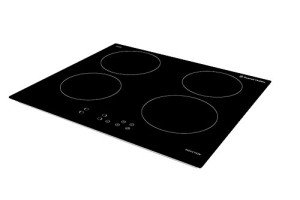The Reason Why Induction Hob Installation Is Everyone's Desire In 2024
Understanding Ceramic Induction Hobs: A Comprehensive Guide
Ceramic induction hobs have become progressively popular in modern cooking areas, integrating performance with aesthetic appeal. They are differentiated by their sleek, flat surfaces and advanced cooking innovation. Unlike conventional gas or electrical stovetops, ceramic induction hobs use electromagnetic energy to heat cookware straight, leading to much faster cooking times, energy efficiency, and enhanced security. This post will check out the various features, advantages, downsides, and maintenance of ceramic induction hobs, as well as respond to some frequently asked concerns.
What is a Ceramic Induction Hob?
A ceramic induction hob uses a glass-ceramic surface that is resistant to thermal shock and scratching, integrated with induction heating technology. The hob produces an electromagnetic field that connects with ferrous pots and pans, producing heat directly in the pot or pan. This method of cooking is usually much faster and more energy-efficient than conventional methods, as less heat is wasted.
Key Features of Ceramic Induction Hobs
- Smooth Surface: The sleek, flat surface of ceramic hobs makes them simple to tidy and preserve.
- Magnetic Heating: Direct heating of pots and pans ensures quicker cooking times and increased energy effectiveness.
- Temperature Control: Precise temperature level settings permit much better control throughout cooking.
- Security Features: Automatic shut-off, child locks, and residual heat indicators improve cooking safety.
- Sleek Design: Aesthetic appeal with a modern look, ideal for modern kitchens.
Advantages of Ceramic Induction Hobs
Ceramic induction hobs provide numerous benefits that make them appealing in different cooking circumstances. Here are a few of the main advantages:
Energy Efficiency:
- Induction cooking utilizes roughly 90% of the energy created, compared to about 70% for electrical coil stoves and around 40% for gas stoves.
Speed:
- Induction hobs can warm pots and pans faster than conventional cooking approaches, lowering general cooking time.
Accuracy:
- Instant change of warms permits precise cooking control, suitable for delicate dishes.
Security:
- The hob itself does not warm up, minimizing the threat of burns. Additionally, if no pots and pans is identified, the heat does not produce.
Easy to Clean:
- The smooth surface avoids food from sticking and enables simple wipe-down with a cloth.
Resilience:
- The ceramic surface is created to withstand high temperature levels and is usually scratch-resistant.
Downsides of Ceramic Induction Hobs
While ceramic induction hobs offer numerous benefits, there are also some drawbacks to think about:
Cost:
- Ceramic induction hobs tend to be more expensive upfront than traditional cooktops.
Cookware Compatibility:
- Only magnetic cookware is suitable with induction hobs, demanding the purchase of new pots and pans if existing pots and pans is non-magnetic.
Knowing Curve:
- For those accustomed to traditional cooking techniques, the adjustment to induction cooking can take a while.
Possible for Scratching:
- Although the ceramic surface area is long lasting, it can scratch if sharp items are dragged across it.
Care and Maintenance of Ceramic Induction Hobs
Appropriate care and maintenance are important for keeping your ceramic induction hob in optimum condition. Follow these steps to extend the hob's life-span:
Routine Cleaning Steps
- Daily Wipe Down: After each usage, wipe the surface with a moist fabric to get rid of spills and splatters.
- Prevent Harsh Chemicals: Use moderate cleaning agents or specialized ceramic cooktop cleaners to prevent damaging the surface.
- Usage Soft Sponges: Clean with soft sponges to prevent scratching the ceramic surface area.
- Deal With Cookware Carefully: Lift, do not drag, pots and pans throughout the surface to avoid scratches.
Deep Cleaning Steps
- Weekly Deep Clean: Use proper cleaners for a more extensive cleansing of any stubborn spots.
- Look For Residual Heat Indicators: Allow the hob to cool before cleansing, and check if the recurring heat indicators are off.
Comparison Table: Ceramic Induction Hobs vs. Other Cooktop Types
Feature
Ceramic Induction Hobs
Electric Coil Stoves
Gas Stoves
Energy Efficiency
High (90%)
Moderate (70%)
Low (40%)
Heat Up Time
Fast
Moderate
Slower
Temperature level Control
Precise
Less Precise
Less Precise
Safety
High
Moderate
Low
Relieve of Cleaning
High
Moderate
Low
Cookware Requirement
Magnetic only
All types
All types
Expense
Higher
Lower
Moderate
Regularly Asked Questions (FAQs)
1. Do I require special pots and pans for a ceramic induction hob?
Yes, only cookware made from ferrous products (such as cast iron or stainless steel) works with induction hobs. If a magnet adheres to the bottom of the cookware, it needs to deal with an induction hob.
2. How do I know if my ceramic induction hob is off?
The majority of induction hobs come geared up with residual heat indicators that highlight if the surface area is still hot. Always inspect these indications before cleaning up or touching the surface area.
3. Can I use my ceramic induction hob during a power failure?
No, ceramic induction hobs need electrical power to function, so they will not operate throughout a power outage.
4. Is it safe to leave my pots and pans on the hob after cooking?
Leaving pots and pans on the hob is generally safe if the recurring heat signs are off. However, it's recommended to remove it as a safety measure against burns or heat damage.
5. Can a ceramic induction hob crack?
While ceramic induction hobs are created to be durable, they can crack if heavy cookware is dropped on them. Correct care needs to be required to avoid such incidents.
Ceramic induction hobs represent a modern solution for efficient cooking in the contemporary kitchen. With ovensandhobs.uk , fast heating, and safety features, they stick out as a popular option for both newbie and knowledgeable cooks. Understanding their advantages and maintenance requirements is important for making the most out of your cooking experience. As innovation continues to advance, ceramic induction hobs will likely hold a popular place in kitchens around the world.
